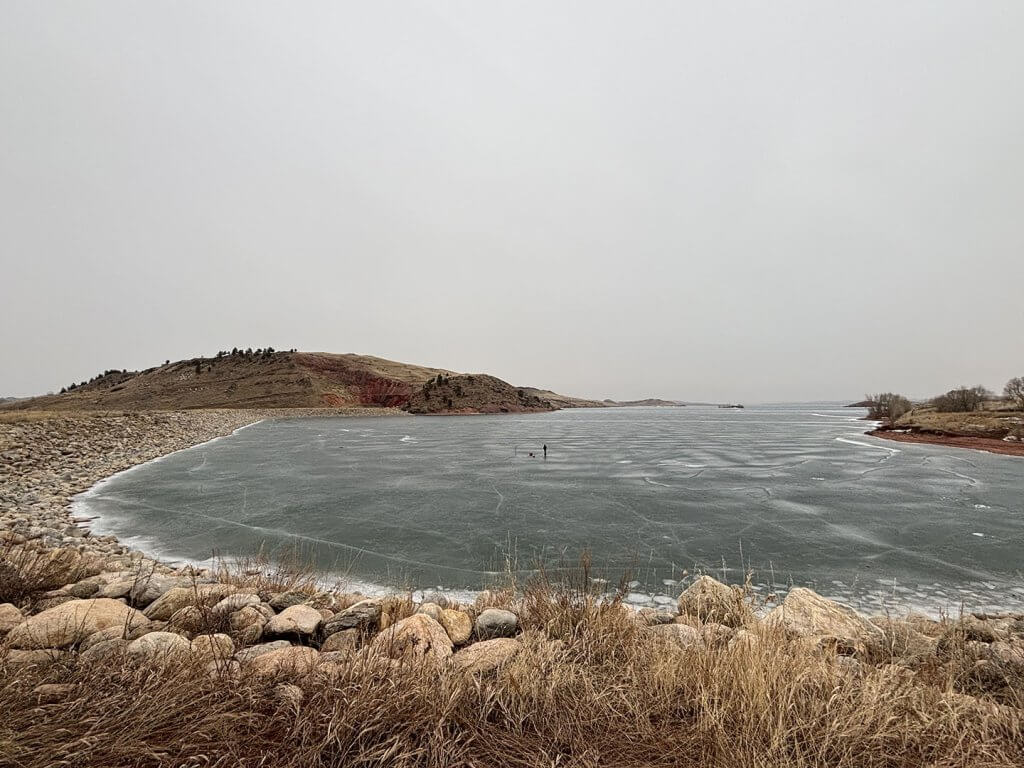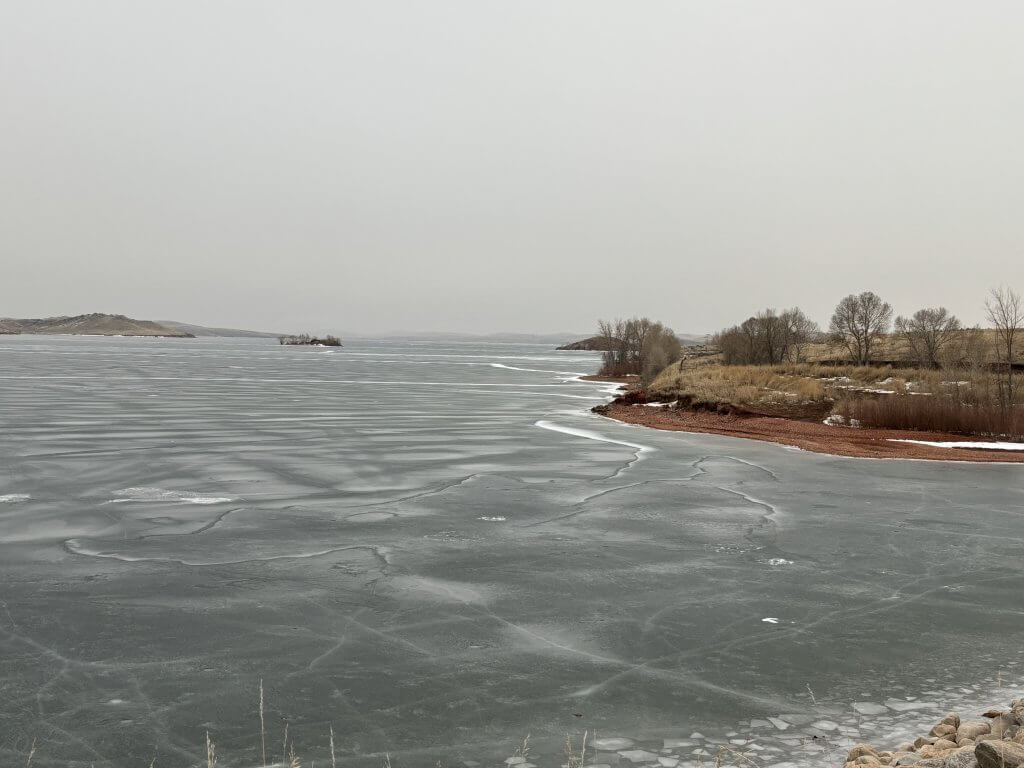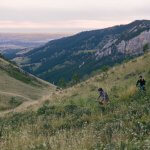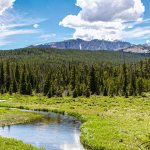
The Mysteries of Lake Desmet
Are there spirits that haunt Lake Desmet? Or sea serpents? Or both?
Lake DeSmet, the large body of water just a few miles north of Buffalo, has an interesting history.
By day, it is a recreational paradise for boating and fishing. By night, it may be a place where spirits or sea serpeants come to life.
Dams have increased the lake to 3,600 acres in surface area, but it was originally about 1,500 acres in size when spotted by Father Pierre-Jean DeSmet in 1851 after traveling south from the Tongue River.
The first man of European descent believed to have seen the lake, DeSmet described it in an August 24 letter: “[W]e crossed a chain of lofty mountains to attain Lower Piney Fork, nearly twenty miles distant. We arrived quite unexpectedly on the borders of a lovely little lake about six miles long, and my traveling companions gave it my name. There our hunters killed several wild ducks.”
The lake had been formed by coal seam fires. After coal deposits beneath the surface burned, the clinker and sediments collapsed into the space vacated by the burned coal.
When the Bozeman Trail and Powder River Expedition passed by the lake in the 1860s, it still was a highly saline body of water that could support only limited types of aquatic life.
Captain Henry Palmer of the U.S. Army said it was “strongly impregnated with alkali, in fact, so strong that an egg or potato will not sink if thrown into the water.” He described the lake as only two miles long and 3/4 of a mile wide.
The lake’s salinity supposedly decreased during a time of great precipitation from 1880 to 1915.
Sea Serpents

The best evidence for sea serpents in the waters of Lake DeSmet is documented in Edward Gillette’s 1925 book “Locating the Iron Trail,” about the surveying for railroad routes in the West. Gillette had surveyed the area in 1910 for a potential railroad line from Sheridan to Casper. He still reported the lake as having “considerable alkali, so that the waters are brackish, but not so much as to be unpalatable to stock or prevent the existence of some species of water life.”
Gillette’s traveling party took a swim “but, on wading a short distance, ugly specimens of fish with large heads and mouths equipped with teeth swam around us and we quickly sought the shore.”
Gillette then recounted tales of sea serpents going back many years.
“It is related that while a party of Indians were camped at the Lake a water animal resembling an alligator, except with much longer legs, came out of the water, seized a papoose about two years old and disappeared with it in the Lake. This accounts for the aversion Indians have had for Lake de Smet.”
He reported a few drownings, attributed to being tangled up in the sea grass or cramps. Although, citing the reports that the swimmers had not struggled frantically and the fact bodies were never recovered, he speculated that it could have been the sea serpent.
A rancher named Barkey, who owned property in the area of the lake, and his wife reported to Gillette the sighting of two sea serpeants “which had made a great commotion in the water, and swam as fast as a horse could trot.” Mrs. Barkey told Gillette “‘they looked like a long telephone pole with lard buckets attached,’ referring no doubt to the fins or flappers along their sides.” The Barkeys, who had lived near the lake for 25 years, were skeptics who had not seen the serpents before that observance.
Rancher Arthur Senff, who lived a mile north of the lake, also was skeptical. He had two visits with Gillette, and in the first one thought surely the Barkeys were mistaken. But before his next visit with Gillette, he also saw the serpent.
“[A] sea serpent raised its head about, what seemed to him, six feet out of the water, and rushed down the lake, making a wave or waves which might swamp a small boat,” Gillette wrote. Senff retrieved his rifle but had no luck shooting the serpent.
“These testimonies coming from thoroughly reliable persons, familiar with the country through long residence, and who discredited the old sea serpent reports, makes one come to the conclusion that probably there are some specimens of a supposed extinct species of water animal in this lake, similar to those recently reported from Patagonia,” Gillette wrote. “Personally, I have no reason to doubth the statements of these ranchers. … What impressed them as much as anything was the great swell or waves caused by these animals at all times and especially so on turning to the opposite direction.”
But the water in the lake was certain to change in the years following Gillette’s visit. Levi Leiter, a Chicago millionaire who was a co-founder of Marshall Field & Co., secured the lake for irrigation purposes and in 1917 had an irrigation ditch built from Piney Creek to the lake.
“The lake has been raised several feet,” Gillette wrote. “What effect this fresh water will have on the animal life in the brackish waters of the lake can only be conjectured, but ultimately, no doubt, the lake will be converted into a body of fresh water, in which trout will thrive the same as in all lakes in this region.”
Spirits

The story of a spirit haunting the lake pre-dates the sea serpents and was told in Ella Clark’s 1966 book Indian Legends from the Northern Rockies.
It is a story about a Crow tribe camped near the lake.
According to the legend, a warrior named Little Moon was to meet his beloved Star Dust at the lake one night while the others in the tribe were asleep. Little Moon arrived early and watched as a bank of mist hovered and then formed the face of beautiful woman. Little Moon did not notice when Star Dust arrived at their meeting place, as the vision was luring Little Moon toward the mist. When Star Dust tried to put her arms around Little Moon in a greeting, he shoved her away and turned back to the lake, but the spirit was gone.
The next morning, Star Dust’s drowned body was found on the beach.
The tale is not clear whether she took her own life because of Little Moon’s rejection or whether he killed her, but Star Dust’s father held Little Moon responsible.
Little Moon was chained to a rock and left to die.
The haunting sounds supposedly heard at the lake at night are those of Little Moon calling out to the maiden in the mist.
Read more about Lake DeSmet:
History, Legends and Bozeman Trail Tales (A publication of the Fort Phil Kearny/Bozeman Trail Association.)
Lake DeSmet today ranks as one of the best destinations in the county for fishing and outdoor recreation.

